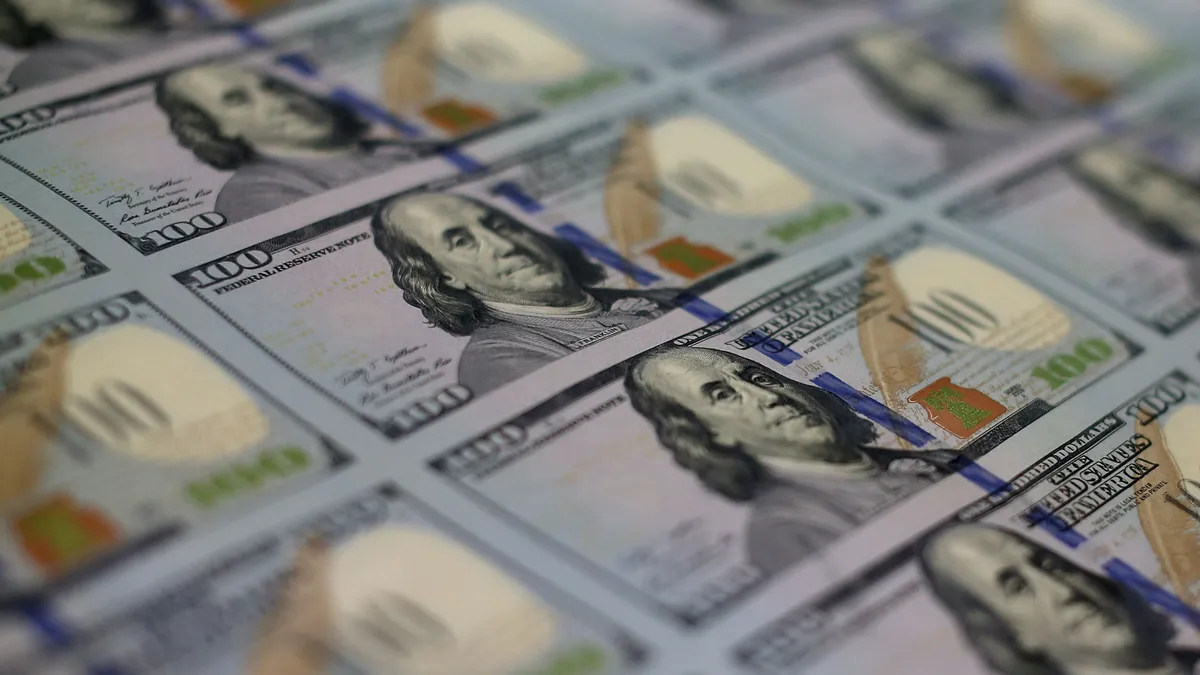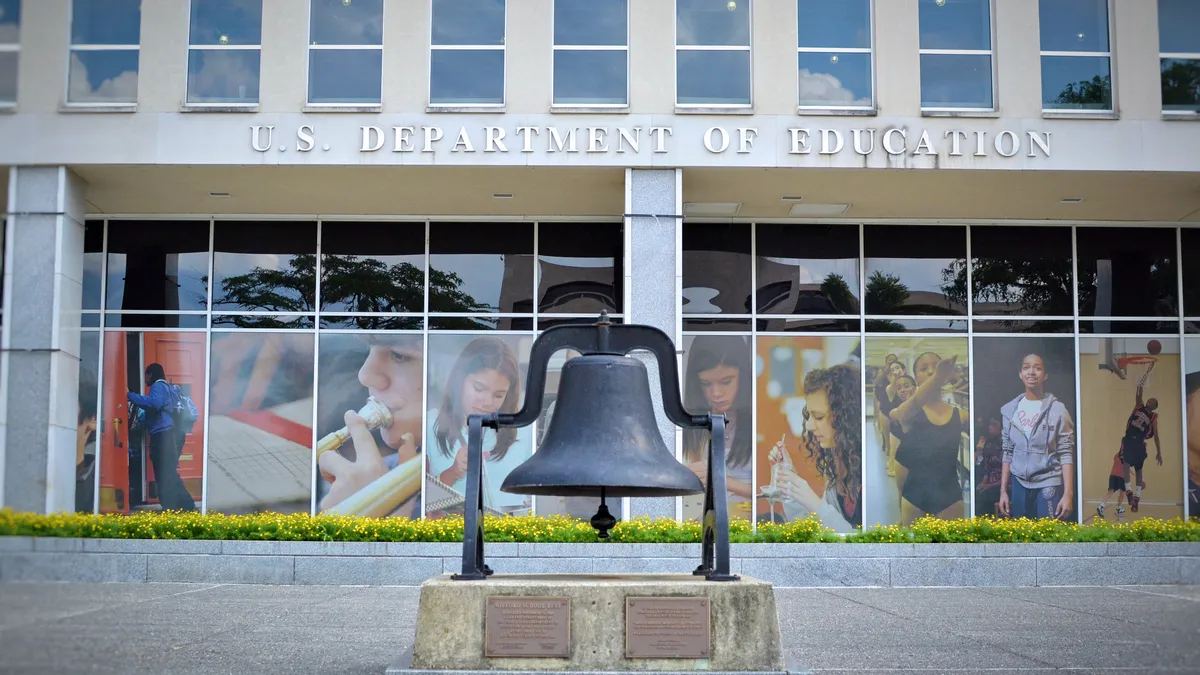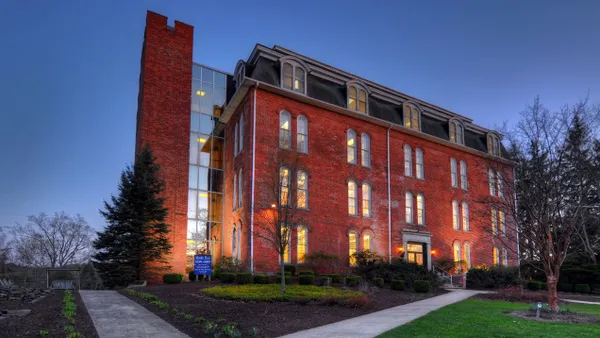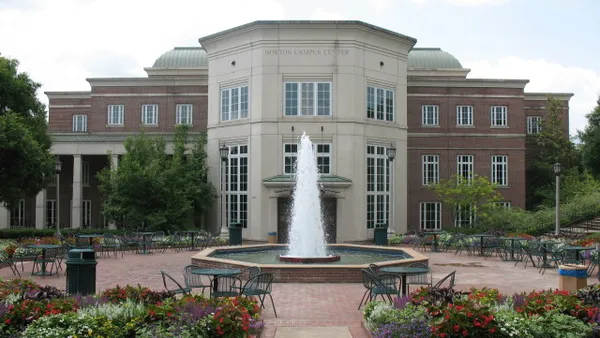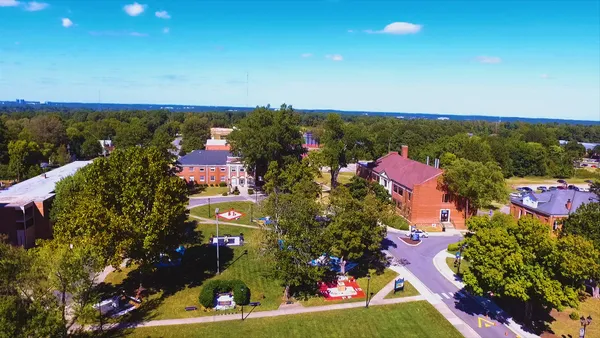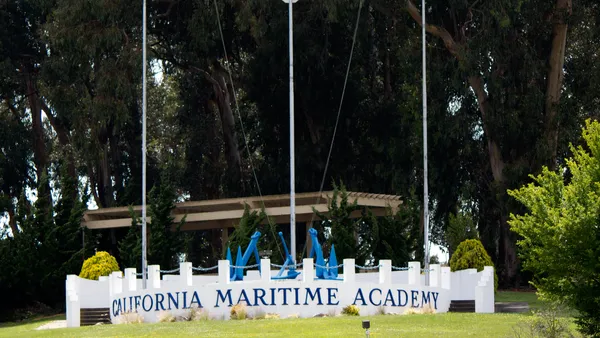Dive Brief:
- The percentage of graduates earning bachelor's degrees in the class of 2020 who took out private student loans ranged from 3% in Utah to 27% in North Dakota, according to a report released this week by The Institute for College Access & Success, a research and advocacy group.
- Students attending private nonprofit colleges were more likely to graduate with private debt than those attending public institutions. The share of graduates with private debt surpassed 15% at 39% of private nonprofits. The same was true at just 22% of public institutions.
- Private nonprofits were more likely to produce graduates who'd taken on high average private debt levels. Average private debt was more than $50,000 at 15% of nonprofits. It exceeded that level at less than 1% of public institutions.
Dive Insight:
The report describes differences in debt levels among states, college types and loan types at a time when private student loans have been ballooning. The private student loan market grew from $92.6 billion in 2014 to $136.3 billion in 2021, the report says. Private loans now make up about 8% of undergraduate and graduate debt.
Increases have been driven by undergraduates taking on more private debt. Among 14 private lenders voluntarily reporting data, undergraduate debt rose as a share of outstanding private debt between 2008 and 2021, from 82% to 89%.
Private loans, which banks or other nonpublic lenders issue, draw scrutiny from student and borrower groups because they typically come with higher interest rates than federal loans. They also don't have as many consumer protections or repayment options, according to TICAS.
The interplay between institutional practices and where students borrow is key, according to the report.
"Some colleges take care to inform students about their federal loan eligibility before certifying private loans, whereas others encourage private loan financing by including private loans in students' award packages," it says.
Other factors can affect private debt levels as well. For example, unauthorized immigrants and those shielded from deportation under the Deferred Action for Childhood Arrivals program cannot access federal financial aid. Many instead turn to private loans to help pay for college, the report says.
The report also calculates average total debt by state at graduation for the class of 2020, including loans issued by the federal government, states, private lenders like banks, and institutions themselves.
Average total debt at graduation for the class of 2020 ranged from a low of $18,350 in Utah to a high of $39,950 in New Hampshire. Average debt exceeded $35,000 in six states — all in the Northeast and Mid-Atlantic. Utah had the smallest share of new graduates with debt, at 39%. South Dakota had the highest at 73%.
The report comes as the U.S. Department of Education prepares to end early next year a pandemic-era suspension of monthly loan payments and interest accrual for most federal student loans.
TICAS called on the department to protect borrowers as that transition takes place.
The Biden administration has been using existing debt forgiveness regulations to clear billions of dollars worth of federal student loans. The administration is also rewriting regulations on student loans.
TICAS based its state-level debt figures on data from 1,100 public and private nonprofit four-year colleges. For-profit colleges aren't included because few report relevant data, according to the report. Private debt estimates came from 1,049 public and private nonprofit four-year institutions.



